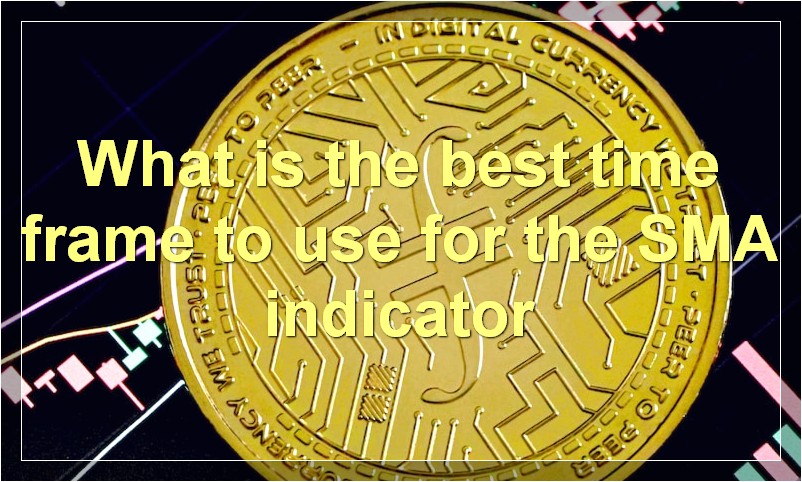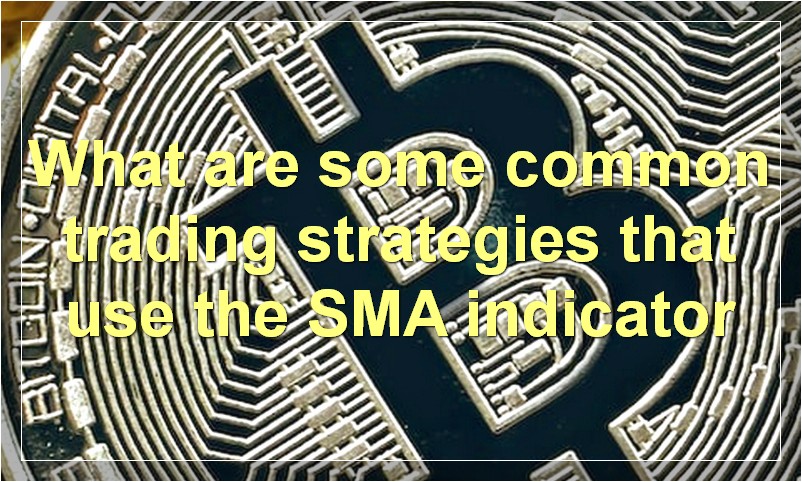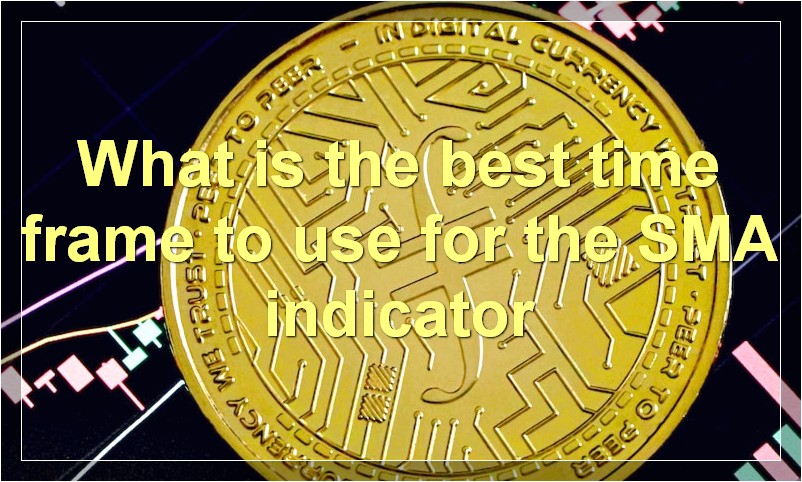As an investor, it’s important to have all the information before making any decisions. The SMA Indicator is a tool that can help make informed decisions.
What is the best time frame to use for the SMA indicator

The SMA indicator is a technical indicator that is used to smooth out price data and make it easier to interpret. The indicator is calculated by taking the average of a security’s prices over a given period of time. The most common time frames for the SMA indicator are 10 days, 20 days, and 50 days.
The best time frame to use for the SMA indicator depends on your investment goals and trading style. If you are looking to generate short-term profits, then a shorter time frame like 10 days or 20 days would be more appropriate. On the other hand, if you are looking to invest for the long term, then a longer time frame like 50 days would be more suitable. Ultimately, it is up to the individual trader to decide which time frame works best for them.
How do you calculate the SMA indicator
A Simple Moving Average (SMA) is the unweighted mean of the previous n data points. To calculate a SMA, you first need to find the sum of the previous n data points. Then, you divide that sum by n. The resulting value is your SMA.
For example, let’s say you want to calculate a 10-day SMA for stock XYZ. You would find the sum of the closing prices for the past 10 days and then divide that by 10.
You can use SMAs to help identify trends in the market. When the price of an asset is above its SMA, it’s generally considered an uptrend. Conversely, when the price is below its SMA, it’s generally considered a downtrend.
SMAs are also used to create other technical indicators, such as the moving average convergence divergence (MACD) indicator.
What is the difference between SMA and EMA indicators
The SMA and EMA indicators are two technical analysis tools that are used to smooth out price data and help make it easier to identify trends. Both indicators give equal weight to all of the prices in the data set, but the EMA gives more weight to recent prices, while the SMA gives equal weight to all prices.
The main difference between the two indicators is that the EMA will react more quickly to recent price changes than the SMA. This means that the EMA is better at identifying short-term trends, while the SMA is better at identifying long-term trends.
What are the benefits of using the SMA indicator
The SMA indicator is a technical analysis tool that is used to smooth out price data and help identify trends. The indicator is calculated by taking the average of past prices over a certain period of time. The resulting line is then plotted on a chart along with the price data.
The main benefit of using the SMA indicator is that it can help traders identify trends. By smoothing out the price data, the indicator can make it easier to spot when prices are trending up or down. This can be helpful in making trading decisions, as it can provide clues as to when to buy or sell.
Another benefit of the SMA indicator is that it can help traders see support and resistance levels. These are levels where prices tend to bounce off of and may provide clues as to where prices are likely to head in the future. Identifying these levels can be helpful in making trading decisions.
Overall, the SMA indicator can be a helpful tool for traders who are looking to smooth out price data and identify trends. While it is not perfect, it can provide some valuable insights that can be helpful in making trading decisions.
What are some common trading strategies that use the SMA indicator

The SMA indicator is a popular technical indicator that is used by many traders to help make trading decisions. There are many different trading strategies that use the SMA indicator, and in this blog post, we will discuss some of the most common ones.
One common trading strategy that uses the SMA indicator is to buy when the price crosses above the SMA, and to sell when the price crosses below the SMA. This is a simple strategy that can be used by both novice and experienced traders.
Another common strategy is to use the SMA as a support or resistance level. Traders will often buy when the price bounces off of the SMA support level, and sell when the price hits the SMA resistance level.
There are many other trading strategies that use the SMA indicator, but these are two of the most common ones. If you are new to trading, then you may want to try out one or both of these strategies to see if they work for you.
What are some things to be aware of when using the SMA indicator
There are a few things to be aware of when using the SMA indicator. First, SMA is a lagging indicator, which means that it will often lag behind price action. This can be frustrating for traders who are trying to trade with the indicator, but it is important to remember that SMA is lagging for a reason. It takes time to calculate an average, so the indicator will always be behind price. Second, SMA is only as good as the data that is inputted into it. If the data is inaccurate, then the indicator will be inaccurate as well. Finally, SMA can be affected by outliers. An outlier is a data point that is significantly different from the rest of the data. For example, if there is a spike in price action, that spike will skew the SMA calculation and make it less accurate.
Are there any drawbacks to using the SMA indicator
The SMA indicator is a popular technical analysis tool that is used by many traders to help make trading decisions. While the SMA indicator can be a helpful tool, there are some drawbacks that traders should be aware of.
One of the biggest drawbacks of using the SMA indicator is that it is a lagging indicator. This means that the SMA indicator will only show you what has happened in the past, and not what is happening in the present or future. This can be a problem because it means that you could make a trading decision based on information that is no longer relevant.
Another drawback of the SMA indicator is that it is often inaccurate. This is because the SMA indicator is based on historical data, which can be distorted. For example, if there has been a sudden spike in price activity, the SMA indicator may not reflect this accurately.
Overall, the SMA indicator can be a helpful tool for traders, but it is important to be aware of its limitations.
How can the SMA indicator be used to make better trading decisions
The SMA indicator can be used to make better trading decisions by providing traders with an insight into the overall market trend. By looking at the average price over a period of time, traders can get a better idea of where the market is headed and make more informed decisions about their trades.
What are some other indicators that can be used in conjunction with the SMA indicator
There are a few other indicators that can be used in conjunction with the SMA indicator. These include the MACD, RSI, and Stochastic indicators. Each of these indicators has its own unique way of measuring momentum and can help to confirm trends.

